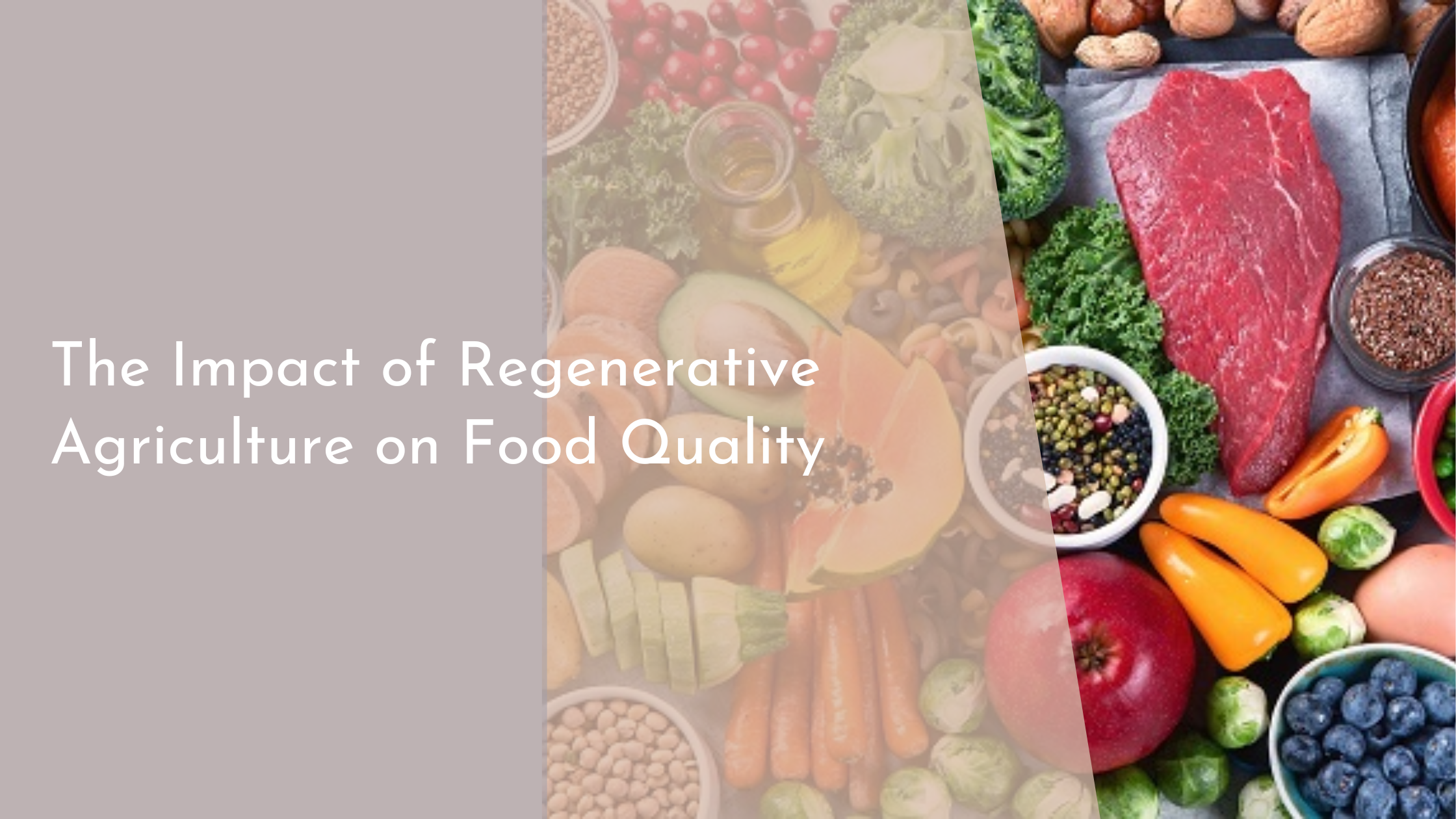The Impact of Regenerative Agriculture on Food Quality
In recent years, there has been a growing interest in regenerative agriculture as a sustainable farming practice that promises not only to restore ecosystems but also to enhance the quality of our food. This approach to agriculture challenges the conventional methods by prioritizing soil health, biodiversity, and ecological balance. As consumers become more conscious of the origins and quality of their food, understanding the impact of regenerative agriculture is essential for making informed choices that benefit both our health and the planet.
Understanding Regenerative Agriculture Basics
Regenerative agriculture is a holistic approach to farming that focuses on restoring and enhancing the health of ecosystems while producing food. It goes beyond traditional sustainable farming by implementing practices that regenerate the land, improve soil health, and increase biodiversity. Key practices include cover cropping, crop rotation, reduced tillage, and integrating livestock, all of which aim to create a self-sustaining and resilient agricultural system. By mimicking natural processes, regenerative agriculture seeks to rebuild organic matter in the soil, which in turn improves water retention, reduces erosion, and increases biodiversity.
Unlike conventional agriculture, which often relies heavily on synthetic fertilizers and pesticides, regenerative agriculture emphasizes natural processes and cycles. This not only reduces the need for chemical inputs but also helps sequester carbon, making it a powerful tool against climate change. By restoring the land’s natural ability to support plant and animal life, regenerative agriculture not only improves environmental health but also enhances the quality of the food produced, making it more nutrient-dense and flavorful.
How Soil Health Enhances Nutrient Quality
Soil health is a cornerstone of regenerative agriculture, and its impact on food quality is profound. Healthy soil is teeming with microorganisms, fungi, and other beneficial organisms that play a vital role in nutrient cycling. These organisms break down organic matter, making essential nutrients available to plants. This leads to crops that are richer in vitamins, minerals, and antioxidants. Studies have shown that produce grown in healthy soil often contains higher levels of nutrients compared to that grown in conventional, chemically treated soils.
Improved soil health also means better water retention and aeration, which allows plants to develop stronger root systems. This, in turn, makes them more resilient to pests and diseases, reducing the need for chemical interventions. When plants can thrive without chemical assistance, they tend to produce more secondary metabolites, compounds that not only enhance the plant’s resistance but also contribute to their nutritional and flavor profiles. Thus, the focus on soil health in regenerative agriculture not only boosts crop yields but also significantly enhances the quality and taste of the food we consume.
Biodiversity’s Role in Flavorful Produce
Biodiversity is a key component of regenerative agriculture that significantly influences the flavor and quality of produce. Diverse ecosystems support a wide range of plant and animal species that interact in complex ways, enhancing the resilience and productivity of the agricultural system. This diversity also affects the biochemical composition of plants, often leading to enhanced flavors and aromas. For example, different plant varieties may be selected for their unique taste profiles, contributing to a more flavorful and interesting diet.
Moreover, biodiversity in regenerative farming practices can lead to the growth of companion plants that naturally repel pests and attract beneficial insects. This reduces the reliance on chemical pesticides and allows the primary crops to develop their full flavor potential. The interaction between different species in a biodiverse farm can create microhabitats that enhance the growth conditions for crops, further promoting the natural expression of their flavors. This symbiotic relationship not only supports a healthy ecosystem but also produces food that is more enjoyable and nutritious.
As we look towards the future of food systems, regenerative agriculture offers a promising path forward. By focusing on soil health, biodiversity, and ecological balance, this approach not only addresses environmental concerns but also enriches the quality of the food we consume. With its potential to produce nutrient-dense, flavorful, and sustainable food, regenerative agriculture is poised to become a key player in feeding a growing population while preserving the planet for future generations. Embracing these practices can lead to healthier diets, vibrant ecosystems, and a more sustainable agricultural model, promising a bright future for our food systems.

